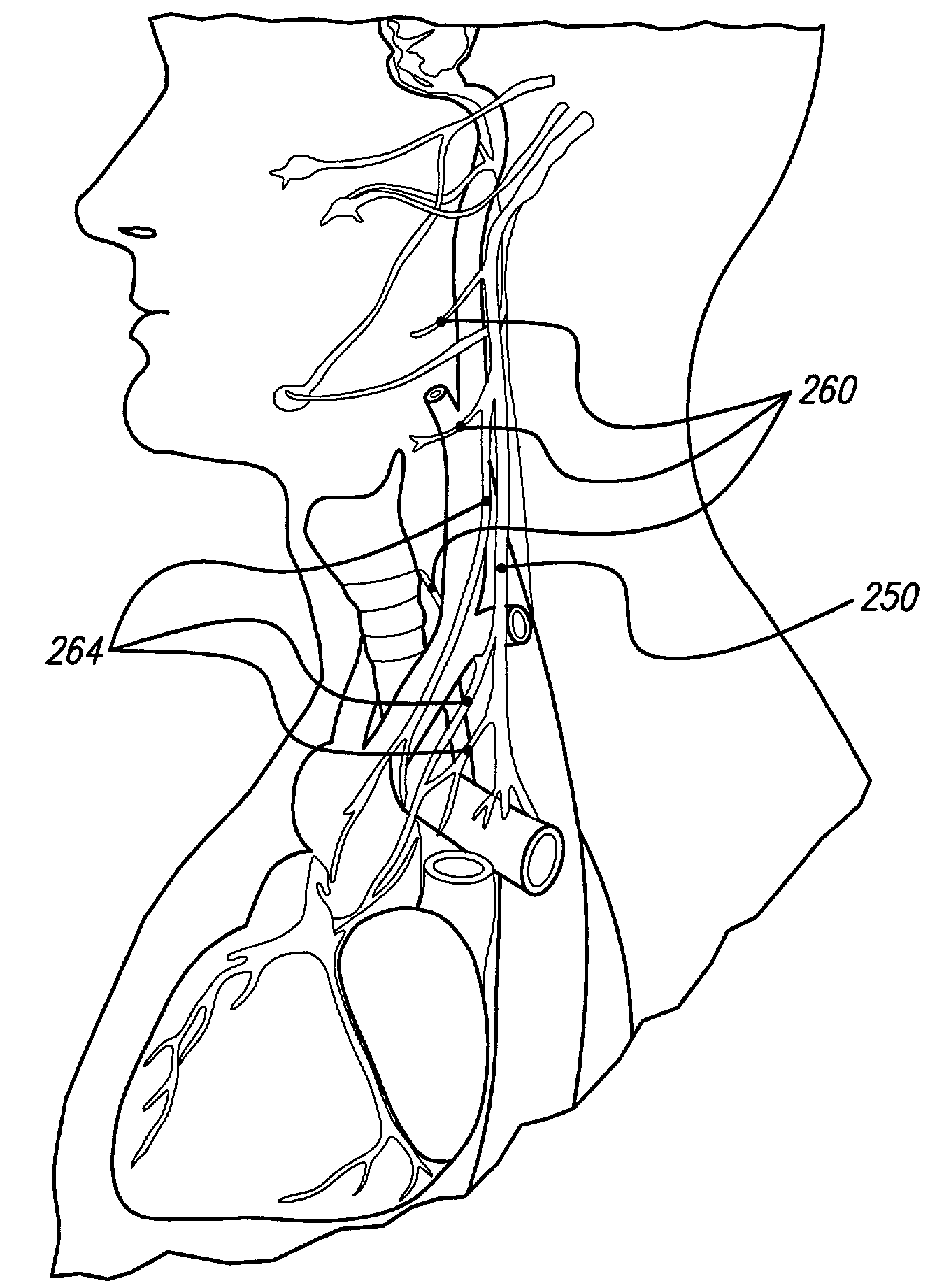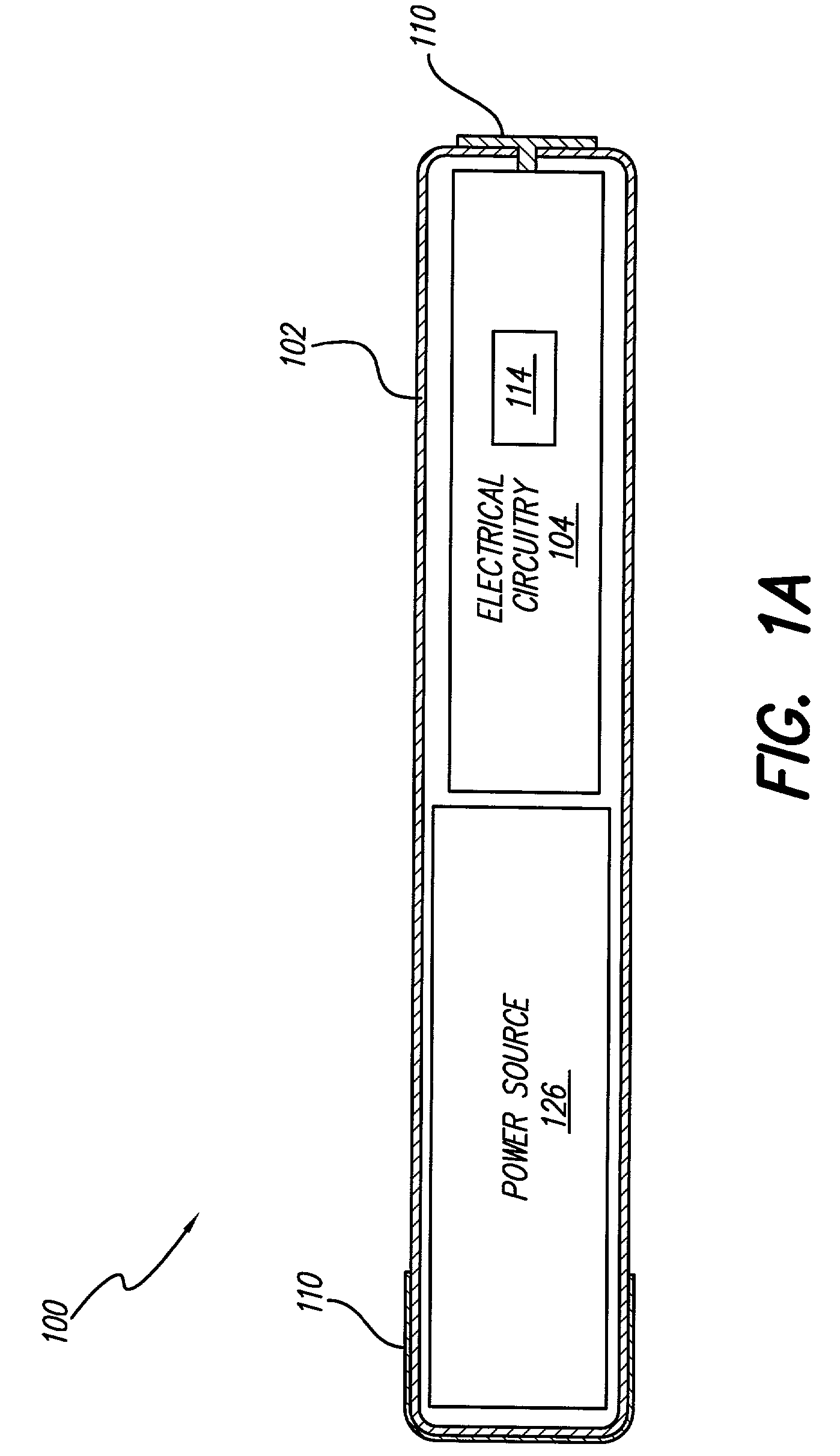Vagus nerve stimulation via unidirectional propagation of action potentials
a vagus nerve and action potential technology, applied in the field of unidirectional propagation of action potentials of the vagus nerve, can solve the problems of affecting the appearance of the patient, prone to mechanical damage, and difficult implantation procedures, and achieve the effect of greater stimulation of neural fibers
- Summary
- Abstract
- Description
- Claims
- Application Information
AI Technical Summary
Benefits of technology
Problems solved by technology
Method used
Image
Examples
Embodiment Construction
[0042]The following description is of the best mode presently contemplated for carrying out the invention. This description is not to be taken in a limiting sense, but is made merely for the purpose of describing the general principles of the invention. The scope of the invention should be determined with reference to the claims.
Unidirectionally Propagating Action Potentials (UPAPs)
[0043]As mentioned earlier, electrical activation of an axon usually produces action potentials that propagate in both the orthodromic and antidromic directions. Generation of a unidirectionally propagating action potential (UPAP) requires three essential components:
[0044](1) Anodic Block in One Direction: Depolarization of an axon membrane leads to two action potentials traveling in opposite directions. In order to generate a UPAP, the propagation of one of the action potentials is blocked (i.e., arrested or inhibited), while the other is allowed to propagate. To block or arrest an action potential, a se...
PUM
 Login to View More
Login to View More Abstract
Description
Claims
Application Information
 Login to View More
Login to View More - R&D
- Intellectual Property
- Life Sciences
- Materials
- Tech Scout
- Unparalleled Data Quality
- Higher Quality Content
- 60% Fewer Hallucinations
Browse by: Latest US Patents, China's latest patents, Technical Efficacy Thesaurus, Application Domain, Technology Topic, Popular Technical Reports.
© 2025 PatSnap. All rights reserved.Legal|Privacy policy|Modern Slavery Act Transparency Statement|Sitemap|About US| Contact US: help@patsnap.com



